Table of Contents
The ZX Spectrum: A Comprehensive Guide
As a fan of classic gaming, I have always been intrigued by the ZX Spectrum. This iconic computer system was released in the United Kingdom in 1982 and quickly became one of the most popular home computers of the 1980s. With its colorful graphics, unique sound capabilities, and vast library of games and software, the ZX Spectrum captured the hearts and imaginations of millions of users around the world.
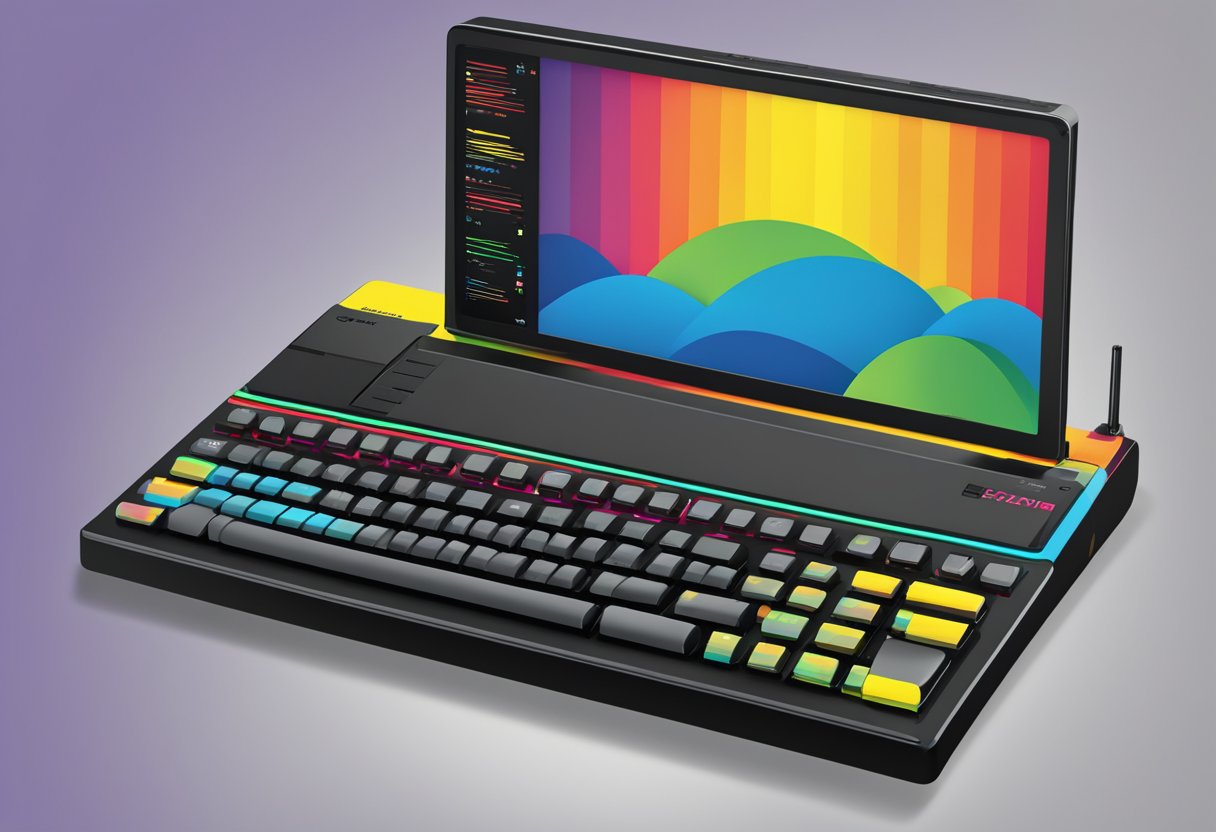
In this comprehensive guide, I will explore everything you need to know about the ZX Spectrum. From its history and technical specifications to its key features and impact on the video game industry, I will provide a detailed overview of this beloved computer system. Whether you are a longtime fan or a newcomer to the world of retro gaming, this guide will give you a deeper understanding of the ZX Spectrum and its enduring legacy.
Key Takeaways
- The ZX Spectrum was a popular home computer system released in the United Kingdom in 1982.
- It featured colorful graphics, unique sound capabilities, and a vast library of games and software.
- The ZX Spectrum had a significant impact on the video game industry and remains beloved by retro gaming enthusiasts today.
History of the ZX Spectrum
The ZX Spectrum is a British-made personal computer that was released in 1982 by Sinclair Research Ltd. It quickly became one of the most popular computers of the 1980s, and it remains a beloved machine among retro gaming enthusiasts today.
The machine was the brainchild of English entrepreneur and inventor Sir Clive Sinclair. Sinclair had previously made a name for himself in the electronics industry with a series of innovative products, including the Sinclair Executive pocket calculator and the Sinclair ZX80 and ZX81 home computers.
The ZX Spectrum was designed to be a low-cost, high-performance computer that could be used for a variety of tasks, including gaming, programming, and office work. It was powered by an 8-bit Zilog Z80A processor running at 3.5 MHz and featured 16 KB of RAM, expandable to 48 KB or 128 KB with additional hardware.
The ZX Spectrum was an instant hit with consumers, thanks in part to its low price point and wide range of software titles. The machine was particularly popular with gamers, who were drawn to its vibrant color graphics and large library of games.
Over the years, the ZX Spectrum underwent several revisions and upgrades, including the ZX Spectrum+, the ZX Spectrum 128, and the ZX Spectrum +2 and +3 models. Despite the machine’s eventual decline in popularity, it remains an important part of computing history and a beloved icon of the 1980s.
Technical Specifications
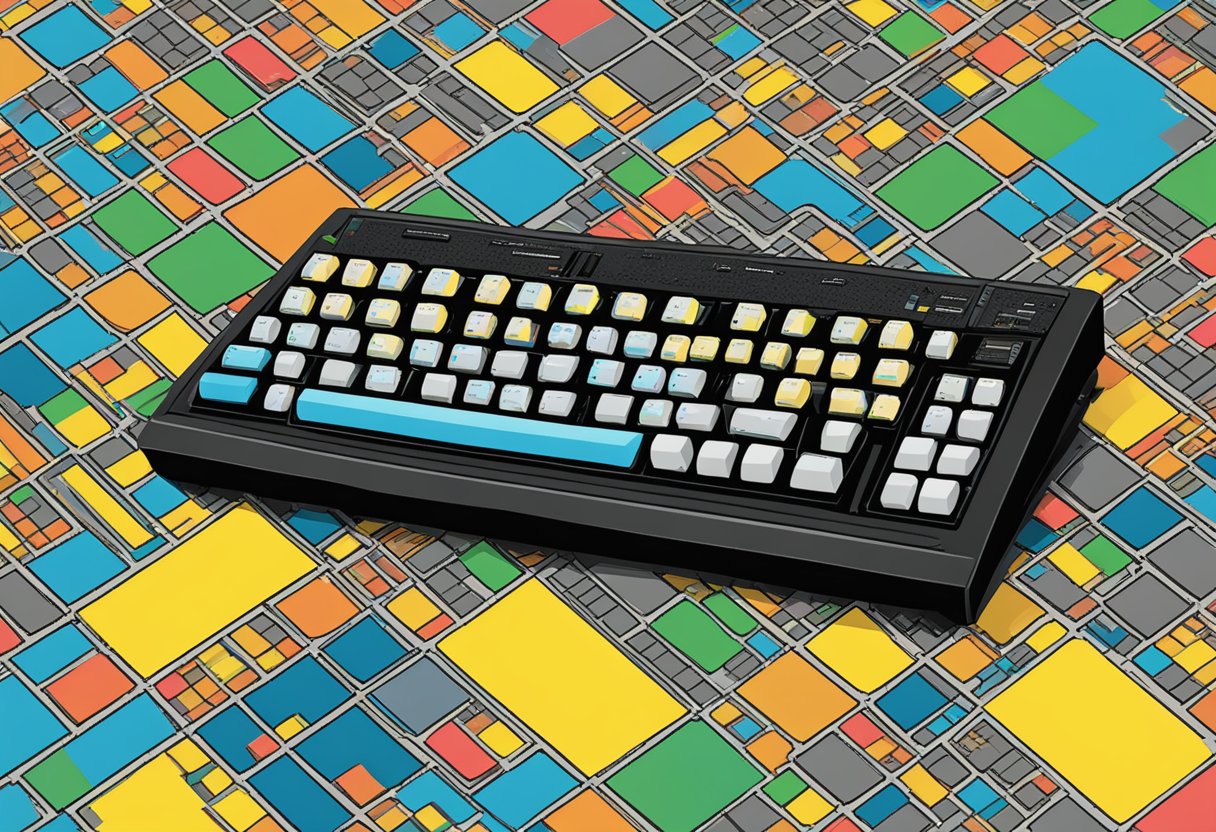
Hardware
The ZX Spectrum was a home computer released in 1982 by Sinclair Research Ltd. It was powered by an 8-bit Z80A CPU running at 3.5 MHz and had either 16 KB or 48 KB of RAM. The computer had a custom ULA chip that provided video and sound output, and could display graphics at a resolution of 256×192 pixels with 8 colors. The computer had a built-in RF modulator for connecting to a TV, a 3.5 mm audio jack for connecting to a cassette recorder, and a joystick port for connecting a joystick or other input device.
Software
The ZX Spectrum was primarily programmed in Sinclair BASIC, a dialect of BASIC that was optimized for the computer’s hardware. The computer had a built-in ROM that contained the BASIC interpreter, as well as a set of system routines for handling input/output, graphics, and sound. The computer also had a built-in editor that allowed users to create and edit BASIC programs directly on the computer.
In addition to BASIC, the ZX Spectrum had a large library of games and applications available on cassette tape, which could be loaded into the computer’s memory using the built-in cassette recorder. The computer also had support for loading and saving data to and from a variety of other storage devices, including floppy disks, hard drives, and network connections.
Overall, the ZX Spectrum was a versatile and innovative computer that helped to popularize home computing in the 1980s. Its low cost, small size, and ease of use made it a popular choice for both hobbyists and professionals alike.
Key Features of the ZX Spectrum
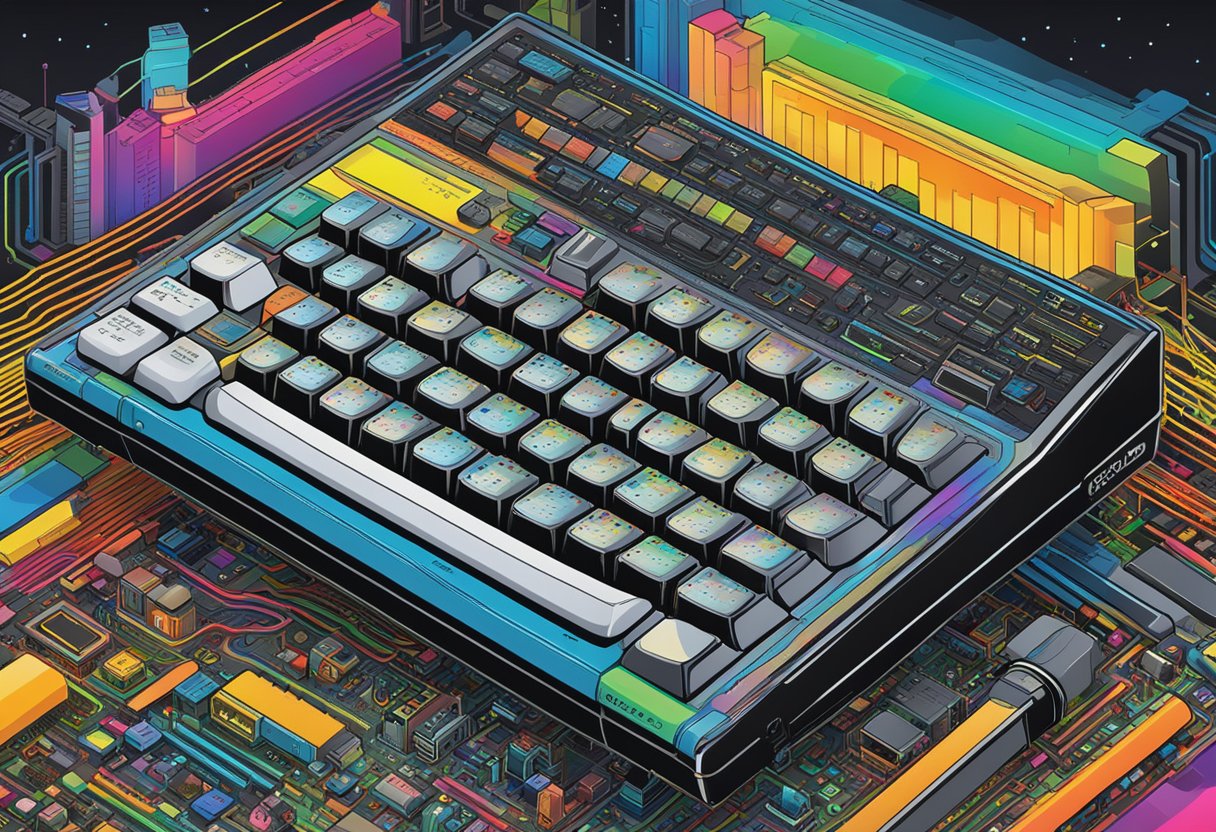
As a proud owner of a ZX Spectrum, I can attest to its many key features that make it a beloved piece of technology. Here are some of the most notable features:
Compact Design
The ZX Spectrum has a compact design that makes it easy to transport and store. Its small size also makes it a great option for those with limited desk space.
Membrane Keyboard
One of the most unique features of the ZX Spectrum is its membrane keyboard. While some may find it less tactile than traditional keyboards, it is durable and easy to clean. Plus, it gives the ZX Spectrum its iconic look.
Color Graphics
The ZX Spectrum’s color graphics were top-of-the-line for its time. It features 15 colors that can be displayed on screen at once, which was a major improvement over its predecessor, the ZX81.
Sound Capabilities
The ZX Spectrum’s sound capabilities are also noteworthy. It features a built-in speaker that can produce a variety of tones and sound effects. The BEEP command can even be used to create music.
Wide Range of Software
The ZX Spectrum has a wide range of software available, including games, educational programs, and productivity tools. Many of these programs can still be found and run on emulators today.
Overall, the ZX Spectrum’s compact design, unique keyboard, color graphics, sound capabilities, and wide range of software make it a classic piece of technology that is still beloved by many today.
Impact on the Video Game Industry
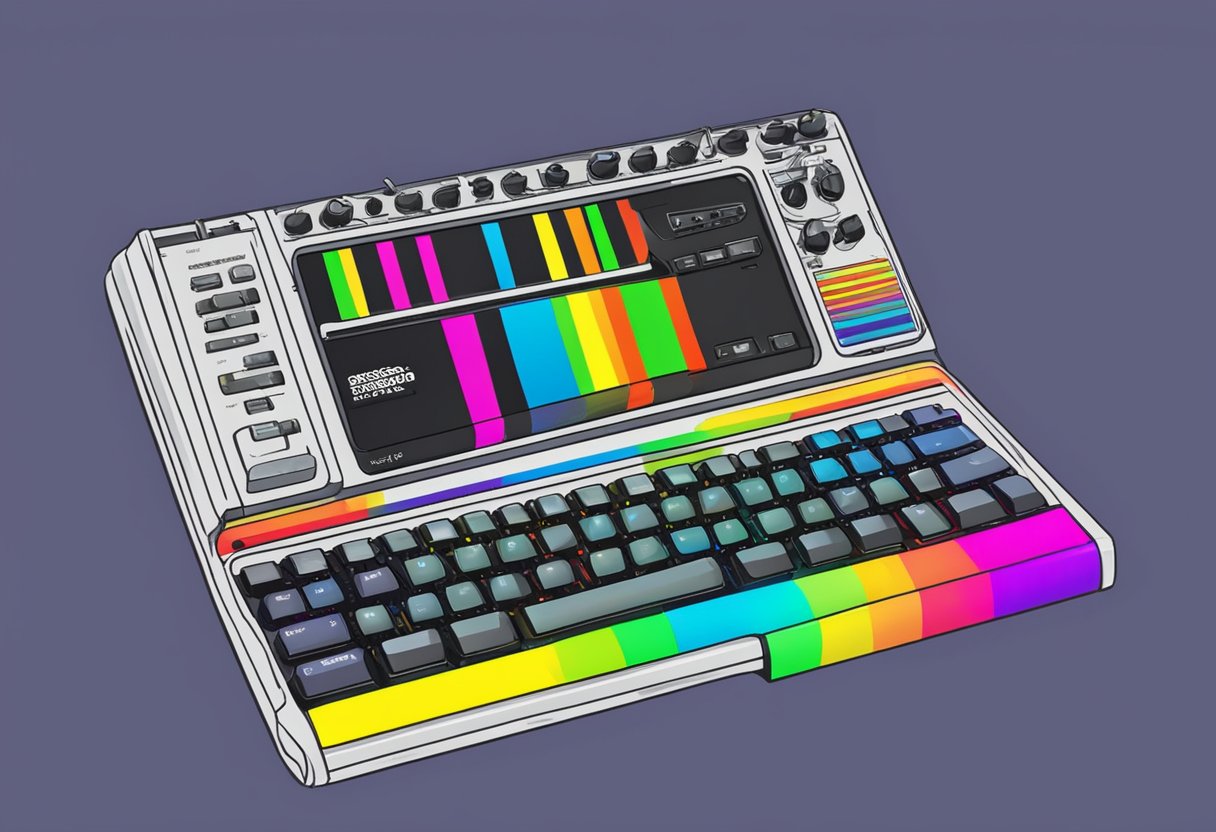
The ZX Spectrum had a huge impact on the video game industry, both in the UK and worldwide. It was one of the first home computers to be affordable for a wide range of people, and it was incredibly popular. Here are some of the ways that the ZX Spectrum impacted the video game industry:
- Increased Accessibility: The ZX Spectrum made home computing accessible to a much wider audience. It was affordable, easy to use, and had a wide range of software available, including games. This increased accessibility helped to grow the video game industry, as more people were able to play games at home.
- Innovative Games: The ZX Spectrum was home to some of the most innovative and creative games of the 1980s. Games like “Manic Miner” and “Jet Set Willy” pushed the boundaries of what was possible with the hardware, and inspired a generation of game developers.
- Homebrew Scene: The ZX Spectrum had a thriving homebrew scene, with many amateur developers creating their own games and software. This helped to foster creativity and innovation in the industry, as well as providing a platform for new talent to emerge.
- Legacy: The impact of the ZX Spectrum can still be felt today. Many of the games that were developed for the platform are still popular today, and the influence of the ZX Spectrum can be seen in modern games. The legacy of the ZX Spectrum is a testament to its impact on the video game industry.
Notable Games and Software
The ZX Spectrum had a vast library of games and software, but some titles stand out for their impact and influence. Here are a few notable games and software for the ZX Spectrum:
1. Elite
Elite, developed by David Braben and Ian Bell, is one of the most iconic games for the ZX Spectrum. It is a space trading and combat simulator that was ahead of its time. The game features open-ended gameplay, a vast universe to explore, and a complex economic system. Elite was a commercial and critical success and inspired many other space games.
2. Manic Miner
Manic Miner, developed by Matthew Smith, is a classic platform game for the ZX Spectrum. It features colorful graphics, catchy music, and challenging gameplay. The game has 20 levels, each with a unique theme and set of obstacles. Manic Miner was a huge success and spawned a sequel, Jet Set Willy.
3. The Hobbit
The Hobbit, developed by Beam Software, is an interactive fiction game based on J.R.R. Tolkien’s novel. The game features a text parser and graphics, and the player controls Bilbo Baggins as he embarks on a quest to defeat the dragon Smaug. The Hobbit was praised for its storytelling and innovative gameplay.
4. Turbo Pascal
Turbo Pascal, developed by Borland, is a programming language and integrated development environment (IDE) for the ZX Spectrum. It was one of the most popular programming tools for the platform and allowed developers to create software and games with ease. Turbo Pascal was also available for other platforms and was a precursor to Borland’s successful Delphi IDE.
These are just a few examples of the notable games and software available for the ZX Spectrum. There are many other titles that are worth exploring, and the platform continues to have a dedicated fanbase today.
Legacy and Influence
The ZX Spectrum was a game-changer in the world of personal computing. It had a significant impact on the computer industry, gaming, and the UK’s technological prowess. In this section, I will discuss the legacy and influence of the ZX Spectrum.
Gaming
The ZX Spectrum was a game-changer in the gaming industry. It was one of the first computers that allowed users to play games at home. The affordable price and innovative design made it a top choice for millions of households. The ZX Spectrum had a library of over 24,000 games, and some of them are still popular today. The ZX Spectrum’s influence on gaming is undeniable, and it paved the way for modern gaming consoles.
Technological Prowess
The ZX Spectrum was a symbol of British technological prowess. It was designed and manufactured in the UK and was one of the first computers that were affordable for the masses. The ZX Spectrum was a British icon, and it helped put the UK on the map as a technological powerhouse. Its legacy is still felt today, and it has inspired many young people to pursue careers in technology.
Enduring Legacy
The ZX Spectrum’s legacy is enduring. It has inspired generations of computer enthusiasts and gamers. Its influence can be seen in modern gaming consoles, and its impact on the computer industry is undeniable. The ZX Spectrum’s legacy will continue to inspire and influence generations to come.
The ZX Spectrum Community
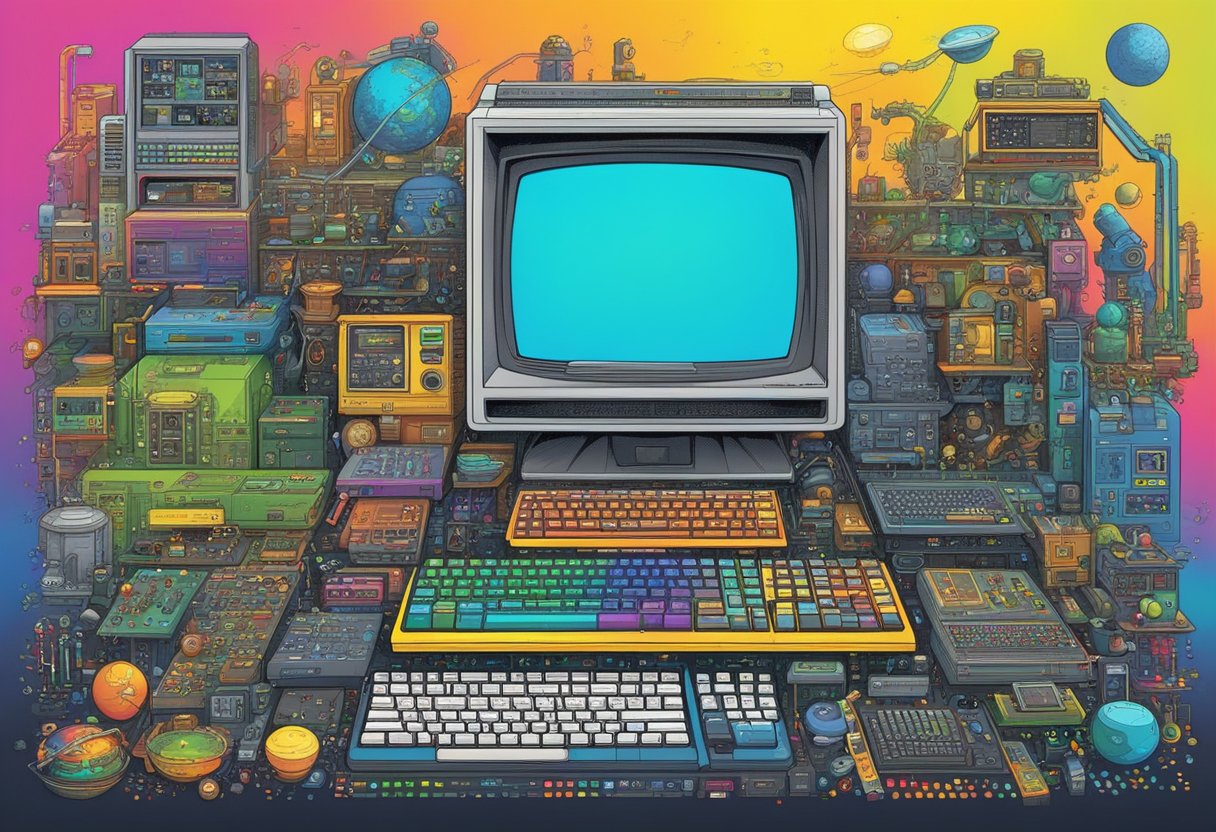
As a proud owner of a ZX Spectrum, I am happy to say that there is still an active community of enthusiasts and developers who continue to keep the platform alive.
One of the best places to connect with other ZX Spectrum fans is the World of Spectrum website. This site has been around since the early days of the Spectrum and is still going strong today. It has a wealth of information on the platform, including games, software, hardware, and documentation. There is also an active forum where you can ask questions, share your experiences, and connect with other users.
Another great resource is the ZX Spectrum Facebook group. This is a large and active group with over 13,000 members. Here you can find news about new releases, updates to old games, and discussions about all things Spectrum-related. It’s a great place to connect with other fans, share your own experiences, and get help with any issues you might be having.
If you’re interested in learning more about programming for the ZX Spectrum, there are also several online communities dedicated to this. The Spectrum Computing website has a large collection of programming resources, including tutorials, code examples, and forums for discussing programming issues. There is also a community of developers on GitHub who are working on new projects for the platform.
Overall, the ZX Spectrum community is a friendly and welcoming group of people who are passionate about this classic platform. Whether you’re a long-time fan or a newcomer, there is something for everyone in this vibrant and active community.
Collecting and Preservation
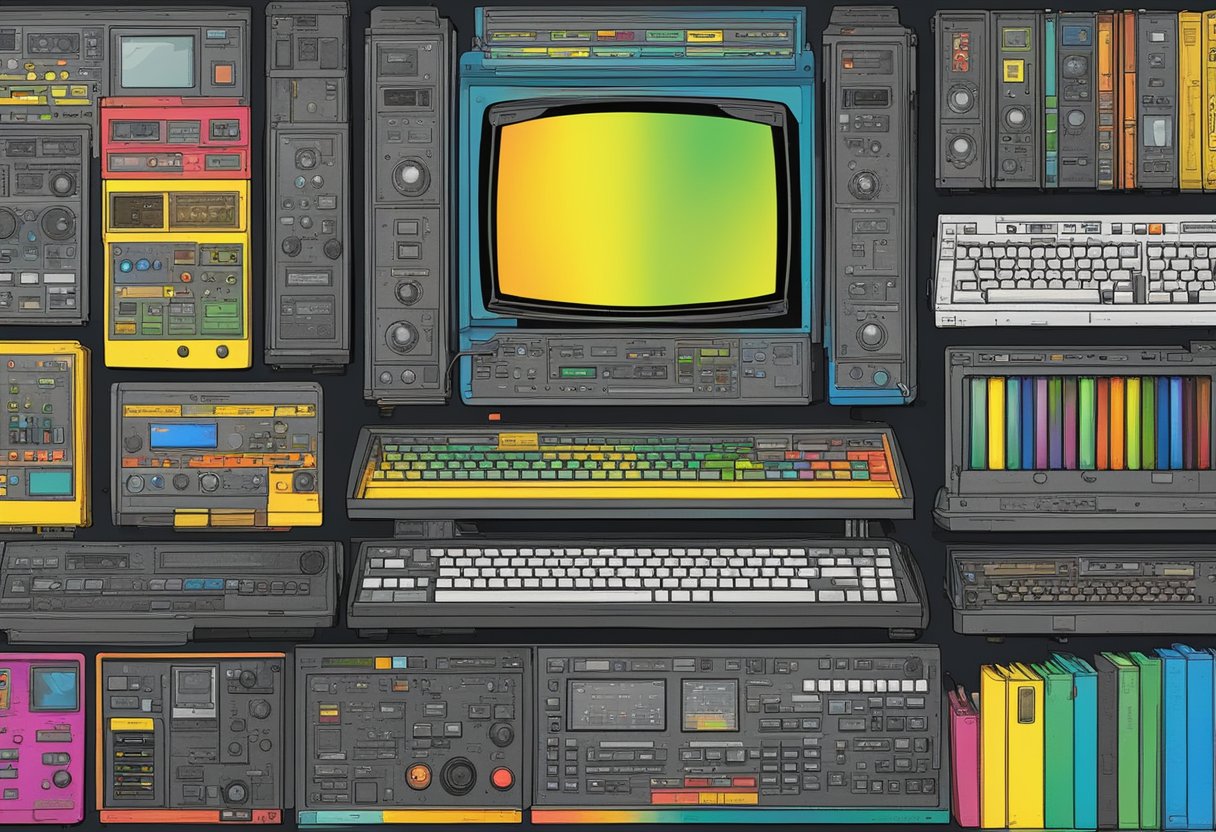
As a fan of the ZX Spectrum, I understand the importance of collecting and preserving this iconic computer system. Here are some tips for those who want to start collecting and preserving ZX Spectrum hardware and software.
Hardware
When it comes to collecting ZX Spectrum hardware, there are a few things to keep in mind. First, the ZX Spectrum was released in several different models, including the ZX Spectrum 16K, 48K, 128K, +2, +3, and the ZX Spectrum Vega. Each model has its own unique features and specifications, so it’s important to research each one to determine which model(s) you want to collect.
Once you’ve determined which model(s) you want to collect, you can start looking for hardware. The best place to start is online auction sites like eBay or local classifieds websites. You can also check out retro gaming stores or attend retro gaming conventions to find hardware.
When purchasing ZX Spectrum hardware, it’s important to make sure that it’s in working condition. Look for sellers who have tested the hardware and can provide proof that it works. You should also check the condition of the hardware, including any scratches, dents, or other damage.
Software
In addition to hardware, there are also thousands of ZX Spectrum games and other software titles that you can collect. The best place to start is online archives like The .TZX Vault or World of Spectrum, which provide access to thousands of ZX Spectrum games and other software titles.
When collecting ZX Spectrum software, it’s important to keep it in good condition. Store your software in a cool, dry place to prevent damage from moisture or heat. You should also make backups of your software to prevent loss in case of damage or loss.
Preservation
Preserving ZX Spectrum hardware and software is important to ensure that future generations can enjoy this iconic computer system. One way to preserve ZX Spectrum hardware is to store it in a cool, dry place and avoid exposing it to moisture or heat. You should also use surge protectors to prevent damage from power surges.
To preserve ZX Spectrum software, you should make backups of your software and store them in a safe place. You can also contribute to online archives like The .TZX Vault or World of Spectrum to help preserve ZX Spectrum software for future generations.
Overall, collecting and preserving ZX Spectrum hardware and software is a great way to celebrate the legacy of this iconic computer system. With a little research and care, you can build a collection that will be enjoyed for years to come.
Emulation and Modern Usage
As a retro gaming enthusiast, I love playing classic ZX Spectrum games on original hardware. However, it’s not always possible to have access to the original hardware. That’s where emulation comes in. Emulation allows users to load and play ZX Spectrum games on a computer or other device that may not have the original hardware.
There are many different emulators available for the ZX Spectrum, including Retro Virtual Machine, ZXSpin, and Fuse. Each emulator has its own strengths and weaknesses, so it’s worth trying out a few to see which one works best for you.
In addition to emulation, there are also modern recreations of the ZX Spectrum available. One such example is the Spectrum Next, which is a modern take on the original hardware. The Spectrum Next includes modern features such as HDMI output and Wi-Fi connectivity, while still maintaining the classic look and feel of the original ZX Spectrum.
Another option for modern usage of the ZX Spectrum is to hand solder your own. There are many different DIY kits available that allow you to build your own ZX Spectrum from scratch. This can be a fun and rewarding project for those who enjoy tinkering with electronics.
Overall, whether you choose to use emulation, a modern recreation, or build your own ZX Spectrum, there are many different options available for enjoying classic ZX Spectrum games in the modern era.
Frequently Asked Questions
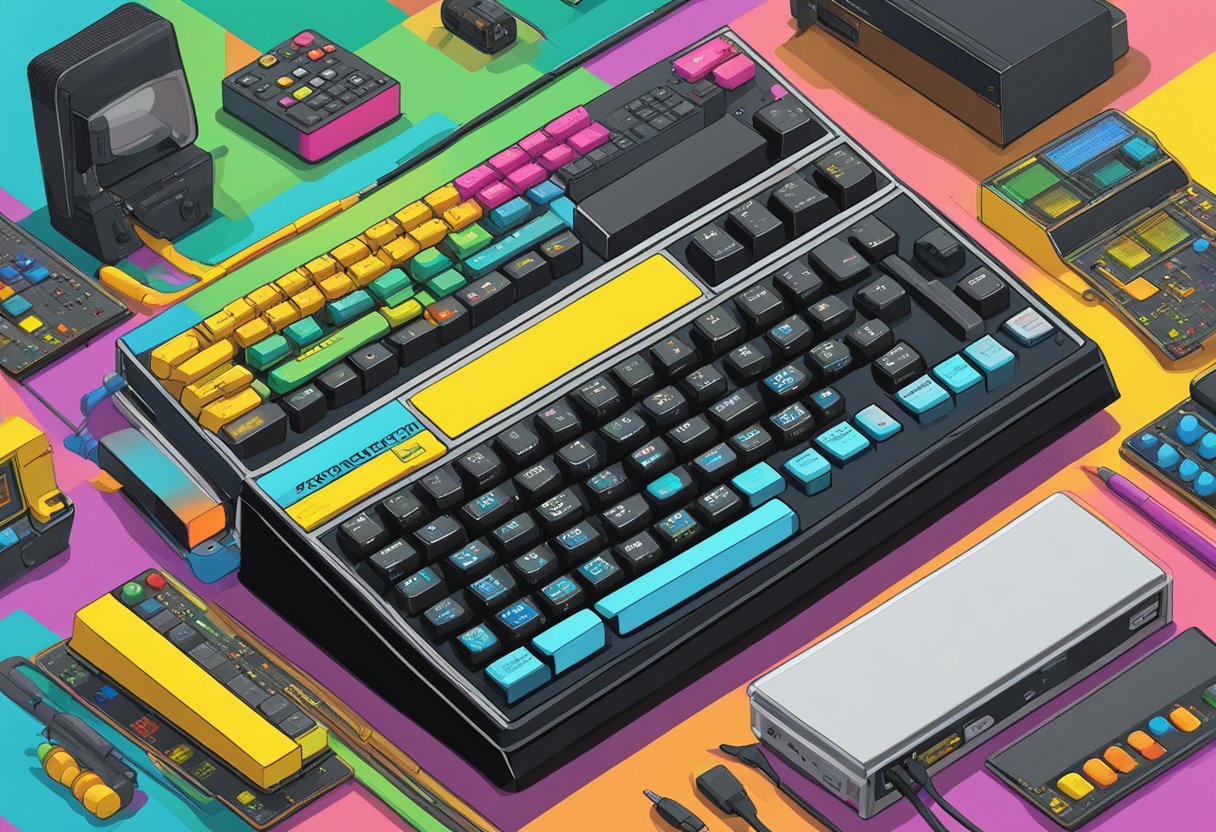
What are the key features of the ZX Spectrum?
The ZX Spectrum was a popular home computer released in 1982 by Sinclair Research. It featured an 8-bit processor, 16KB of RAM, and a membrane keyboard with rubber keys. It was known for its low cost and compact size, making it accessible to a wide audience.
How does the ZX Spectrum compare to other computers of its time?
At the time of its release, the ZX Spectrum was a popular choice for home computing due to its low cost and compact size. It was often compared to other popular home computers of the time such as the Commodore 64 and the Atari 800. While it had less memory and processing power than some of its competitors, it was still a capable machine that could run a variety of software and games.
What accessories were available for the ZX Spectrum?
There were a variety of accessories available for the ZX Spectrum, including joysticks, printers, and modems. One popular accessory was the ZX Microdrive, which allowed users to store data on small cartridges. Another popular accessory was the Interface 1, which allowed users to connect external devices such as printers and modems to the computer.
What are some notable games developed for the ZX Spectrum?
The ZX Spectrum was known for its extensive library of games, with many classic titles still fondly remembered by fans today. Some notable games developed for the ZX Spectrum include “Manic Miner,” “Jet Set Willy,” “Chuckie Egg,” and “Knight Lore.”
How did the ZX Spectrum impact the home computer market?
The ZX Spectrum was a popular home computer that helped to popularize home computing in the UK and beyond. Its low cost and compact size made it accessible to a wide audience, and its extensive library of games helped to establish it as a popular gaming platform. It was also notable for its use of BASIC programming language, which helped to introduce many users to programming and computer science.
What is the current status of the ZX Spectrum community?
The ZX Spectrum still has an active community of fans and enthusiasts today, with many websites and forums dedicated to the platform. There are also a variety of emulators and hardware clones available that allow users to experience the ZX Spectrum on modern hardware. While the original ZX Spectrum is no longer in production, its legacy continues to live on.
As a fan of classic gaming, I have always been intrigued by the ZX Spectrum. This iconic computer system was released in the United Kingdom in 1982 and quickly became one of the most popular home computers of the 1980s. With its colorful graphics, unique sound capabilities, and vast library of games and software, the ZX Spectrum captured the hearts and imaginations of millions of users around the world.

In this comprehensive guide, I will explore everything you need to know about the ZX Spectrum. From its history and technical specifications to its key features and impact on the video game industry, I will provide a detailed overview of this beloved computer system. Whether you are a longtime fan or a newcomer to the world of retro gaming, this guide will give you a deeper understanding of the ZX Spectrum and its enduring legacy.
Key Takeaways
- The ZX Spectrum was a popular home computer system released in the United Kingdom in 1982.
- It featured colorful graphics, unique sound capabilities, and a vast library of games and software.
- The ZX Spectrum had a significant impact on the video game industry and remains beloved by retro gaming enthusiasts today.
History of the ZX Spectrum
The ZX Spectrum is a British-made personal computer that was released in 1982 by Sinclair Research Ltd. It quickly became one of the most popular computers of the 1980s, and it remains a beloved machine among retro gaming enthusiasts today.
The machine was the brainchild of English entrepreneur and inventor Sir Clive Sinclair. Sinclair had previously made a name for himself in the electronics industry with a series of innovative products, including the Sinclair Executive pocket calculator and the Sinclair ZX80 and ZX81 home computers.
The ZX Spectrum was designed to be a low-cost, high-performance computer that could be used for a variety of tasks, including gaming, programming, and office work. It was powered by an 8-bit Zilog Z80A processor running at 3.5 MHz and featured 16 KB of RAM, expandable to 48 KB or 128 KB with additional hardware.
The ZX Spectrum was an instant hit with consumers, thanks in part to its low price point and wide range of software titles. The machine was particularly popular with gamers, who were drawn to its vibrant color graphics and large library of games.
Over the years, the ZX Spectrum underwent several revisions and upgrades, including the ZX Spectrum+, the ZX Spectrum 128, and the ZX Spectrum +2 and +3 models. Despite the machine’s eventual decline in popularity, it remains an important part of computing history and a beloved icon of the 1980s.
Technical Specifications

Hardware
The ZX Spectrum was a home computer released in 1982 by Sinclair Research Ltd. It was powered by an 8-bit Z80A CPU running at 3.5 MHz and had either 16 KB or 48 KB of RAM. The computer had a custom ULA chip that provided video and sound output, and could display graphics at a resolution of 256×192 pixels with 8 colors. The computer had a built-in RF modulator for connecting to a TV, a 3.5 mm audio jack for connecting to a cassette recorder, and a joystick port for connecting a joystick or other input device.
Software
The ZX Spectrum was primarily programmed in Sinclair BASIC, a dialect of BASIC that was optimized for the computer’s hardware. The computer had a built-in ROM that contained the BASIC interpreter, as well as a set of system routines for handling input/output, graphics, and sound. The computer also had a built-in editor that allowed users to create and edit BASIC programs directly on the computer.
In addition to BASIC, the ZX Spectrum had a large library of games and applications available on cassette tape, which could be loaded into the computer’s memory using the built-in cassette recorder. The computer also had support for loading and saving data to and from a variety of other storage devices, including floppy disks, hard drives, and network connections.
Overall, the ZX Spectrum was a versatile and innovative computer that helped to popularize home computing in the 1980s. Its low cost, small size, and ease of use made it a popular choice for both hobbyists and professionals alike.
Key Features of the ZX Spectrum

As a proud owner of a ZX Spectrum, I can attest to its many key features that make it a beloved piece of technology. Here are some of the most notable features:
Compact Design
The ZX Spectrum has a compact design that makes it easy to transport and store. Its small size also makes it a great option for those with limited desk space.
Membrane Keyboard
One of the most unique features of the ZX Spectrum is its membrane keyboard. While some may find it less tactile than traditional keyboards, it is durable and easy to clean. Plus, it gives the ZX Spectrum its iconic look.
Color Graphics
The ZX Spectrum’s color graphics were top-of-the-line for its time. It features 15 colors that can be displayed on screen at once, which was a major improvement over its predecessor, the ZX81.
Sound Capabilities
The ZX Spectrum’s sound capabilities are also noteworthy. It features a built-in speaker that can produce a variety of tones and sound effects. The BEEP command can even be used to create music.
Wide Range of Software
The ZX Spectrum has a wide range of software available, including games, educational programs, and productivity tools. Many of these programs can still be found and run on emulators today.
Overall, the ZX Spectrum’s compact design, unique keyboard, color graphics, sound capabilities, and wide range of software make it a classic piece of technology that is still beloved by many today.
Impact on the Video Game Industry

The ZX Spectrum had a huge impact on the video game industry, both in the UK and worldwide. It was one of the first home computers to be affordable for a wide range of people, and it was incredibly popular. Here are some of the ways that the ZX Spectrum impacted the video game industry:
- Increased Accessibility: The ZX Spectrum made home computing accessible to a much wider audience. It was affordable, easy to use, and had a wide range of software available, including games. This increased accessibility helped to grow the video game industry, as more people were able to play games at home.
- Innovative Games: The ZX Spectrum was home to some of the most innovative and creative games of the 1980s. Games like “Manic Miner” and “Jet Set Willy” pushed the boundaries of what was possible with the hardware, and inspired a generation of game developers.
- Homebrew Scene: The ZX Spectrum had a thriving homebrew scene, with many amateur developers creating their own games and software. This helped to foster creativity and innovation in the industry, as well as providing a platform for new talent to emerge.
- Legacy: The impact of the ZX Spectrum can still be felt today. Many of the games that were developed for the platform are still popular today, and the influence of the ZX Spectrum can be seen in modern games. The legacy of the ZX Spectrum is a testament to its impact on the video game industry.
Notable Games and Software
The ZX Spectrum had a vast library of games and software, but some titles stand out for their impact and influence. Here are a few notable games and software for the ZX Spectrum:
1. Elite
Elite, developed by David Braben and Ian Bell, is one of the most iconic games for the ZX Spectrum. It is a space trading and combat simulator that was ahead of its time. The game features open-ended gameplay, a vast universe to explore, and a complex economic system. Elite was a commercial and critical success and inspired many other space games.
2. Manic Miner
Manic Miner, developed by Matthew Smith, is a classic platform game for the ZX Spectrum. It features colorful graphics, catchy music, and challenging gameplay. The game has 20 levels, each with a unique theme and set of obstacles. Manic Miner was a huge success and spawned a sequel, Jet Set Willy.
3. The Hobbit
The Hobbit, developed by Beam Software, is an interactive fiction game based on J.R.R. Tolkien’s novel. The game features a text parser and graphics, and the player controls Bilbo Baggins as he embarks on a quest to defeat the dragon Smaug. The Hobbit was praised for its storytelling and innovative gameplay.
4. Turbo Pascal
Turbo Pascal, developed by Borland, is a programming language and integrated development environment (IDE) for the ZX Spectrum. It was one of the most popular programming tools for the platform and allowed developers to create software and games with ease. Turbo Pascal was also available for other platforms and was a precursor to Borland’s successful Delphi IDE.
These are just a few examples of the notable games and software available for the ZX Spectrum. There are many other titles that are worth exploring, and the platform continues to have a dedicated fanbase today.
Legacy and Influence
The ZX Spectrum was a game-changer in the world of personal computing. It had a significant impact on the computer industry, gaming, and the UK’s technological prowess. In this section, I will discuss the legacy and influence of the ZX Spectrum.
Gaming
The ZX Spectrum was a game-changer in the gaming industry. It was one of the first computers that allowed users to play games at home. The affordable price and innovative design made it a top choice for millions of households. The ZX Spectrum had a library of over 24,000 games, and some of them are still popular today. The ZX Spectrum’s influence on gaming is undeniable, and it paved the way for modern gaming consoles.
Technological Prowess
The ZX Spectrum was a symbol of British technological prowess. It was designed and manufactured in the UK and was one of the first computers that were affordable for the masses. The ZX Spectrum was a British icon, and it helped put the UK on the map as a technological powerhouse. Its legacy is still felt today, and it has inspired many young people to pursue careers in technology.
Enduring Legacy
The ZX Spectrum’s legacy is enduring. It has inspired generations of computer enthusiasts and gamers. Its influence can be seen in modern gaming consoles, and its impact on the computer industry is undeniable. The ZX Spectrum’s legacy will continue to inspire and influence generations to come.
The ZX Spectrum Community

As a proud owner of a ZX Spectrum, I am happy to say that there is still an active community of enthusiasts and developers who continue to keep the platform alive.
One of the best places to connect with other ZX Spectrum fans is the World of Spectrum website. This site has been around since the early days of the Spectrum and is still going strong today. It has a wealth of information on the platform, including games, software, hardware, and documentation. There is also an active forum where you can ask questions, share your experiences, and connect with other users.
Another great resource is the ZX Spectrum Facebook group. This is a large and active group with over 13,000 members. Here you can find news about new releases, updates to old games, and discussions about all things Spectrum-related. It’s a great place to connect with other fans, share your own experiences, and get help with any issues you might be having.
If you’re interested in learning more about programming for the ZX Spectrum, there are also several online communities dedicated to this. The Spectrum Computing website has a large collection of programming resources, including tutorials, code examples, and forums for discussing programming issues. There is also a community of developers on GitHub who are working on new projects for the platform.
Overall, the ZX Spectrum community is a friendly and welcoming group of people who are passionate about this classic platform. Whether you’re a long-time fan or a newcomer, there is something for everyone in this vibrant and active community.
Collecting and Preservation

As a fan of the ZX Spectrum, I understand the importance of collecting and preserving this iconic computer system. Here are some tips for those who want to start collecting and preserving ZX Spectrum hardware and software.
Hardware
When it comes to collecting ZX Spectrum hardware, there are a few things to keep in mind. First, the ZX Spectrum was released in several different models, including the ZX Spectrum 16K, 48K, 128K, +2, +3, and the ZX Spectrum Vega. Each model has its own unique features and specifications, so it’s important to research each one to determine which model(s) you want to collect.
Once you’ve determined which model(s) you want to collect, you can start looking for hardware. The best place to start is online auction sites like eBay or local classifieds websites. You can also check out retro gaming stores or attend retro gaming conventions to find hardware.
When purchasing ZX Spectrum hardware, it’s important to make sure that it’s in working condition. Look for sellers who have tested the hardware and can provide proof that it works. You should also check the condition of the hardware, including any scratches, dents, or other damage.
Software
In addition to hardware, there are also thousands of ZX Spectrum games and other software titles that you can collect. The best place to start is online archives like The .TZX Vault or World of Spectrum, which provide access to thousands of ZX Spectrum games and other software titles.
When collecting ZX Spectrum software, it’s important to keep it in good condition. Store your software in a cool, dry place to prevent damage from moisture or heat. You should also make backups of your software to prevent loss in case of damage or loss.
Preservation
Preserving ZX Spectrum hardware and software is important to ensure that future generations can enjoy this iconic computer system. One way to preserve ZX Spectrum hardware is to store it in a cool, dry place and avoid exposing it to moisture or heat. You should also use surge protectors to prevent damage from power surges.
To preserve ZX Spectrum software, you should make backups of your software and store them in a safe place. You can also contribute to online archives like The .TZX Vault or World of Spectrum to help preserve ZX Spectrum software for future generations.
Overall, collecting and preserving ZX Spectrum hardware and software is a great way to celebrate the legacy of this iconic computer system. With a little research and care, you can build a collection that will be enjoyed for years to come.
Emulation and Modern Usage
As a retro gaming enthusiast, I love playing classic ZX Spectrum games on original hardware. However, it’s not always possible to have access to the original hardware. That’s where emulation comes in. Emulation allows users to load and play ZX Spectrum games on a computer or other device that may not have the original hardware.
There are many different emulators available for the ZX Spectrum, including Retro Virtual Machine, ZXSpin, and Fuse. Each emulator has its own strengths and weaknesses, so it’s worth trying out a few to see which one works best for you.
In addition to emulation, there are also modern recreations of the ZX Spectrum available. One such example is the Spectrum Next, which is a modern take on the original hardware. The Spectrum Next includes modern features such as HDMI output and Wi-Fi connectivity, while still maintaining the classic look and feel of the original ZX Spectrum.
Another option for modern usage of the ZX Spectrum is to hand solder your own. There are many different DIY kits available that allow you to build your own ZX Spectrum from scratch. This can be a fun and rewarding project for those who enjoy tinkering with electronics.
Overall, whether you choose to use emulation, a modern recreation, or build your own ZX Spectrum, there are many different options available for enjoying classic ZX Spectrum games in the modern era.
Frequently Asked Questions

What are the key features of the ZX Spectrum?
The ZX Spectrum was a popular home computer released in 1982 by Sinclair Research. It featured an 8-bit processor, 16KB of RAM, and a membrane keyboard with rubber keys. It was known for its low cost and compact size, making it accessible to a wide audience.
How does the ZX Spectrum compare to other computers of its time?
At the time of its release, the ZX Spectrum was a popular choice for home computing due to its low cost and compact size. It was often compared to other popular home computers of the time such as the Commodore 64 and the Atari 800. While it had less memory and processing power than some of its competitors, it was still a capable machine that could run a variety of software and games.
What accessories were available for the ZX Spectrum?
There were a variety of accessories available for the ZX Spectrum, including joysticks, printers, and modems. One popular accessory was the ZX Microdrive, which allowed users to store data on small cartridges. Another popular accessory was the Interface 1, which allowed users to connect external devices such as printers and modems to the computer.
What are some notable games developed for the ZX Spectrum?
The ZX Spectrum was known for its extensive library of games, with many classic titles still fondly remembered by fans today. Some notable games developed for the ZX Spectrum include “Manic Miner,” “Jet Set Willy,” “Chuckie Egg,” and “Knight Lore.”
How did the ZX Spectrum impact the home computer market?
The ZX Spectrum was a popular home computer that helped to popularize home computing in the UK and beyond. Its low cost and compact size made it accessible to a wide audience, and its extensive library of games helped to establish it as a popular gaming platform. It was also notable for its use of BASIC programming language, which helped to introduce many users to programming and computer science.
What is the current status of the ZX Spectrum community?
The ZX Spectrum still has an active community of fans and enthusiasts today, with many websites and forums dedicated to the platform. There are also a variety of emulators and hardware clones available that allow users to experience the ZX Spectrum on modern hardware. While the original ZX Spectrum is no longer in production, its legacy continues to live on.

